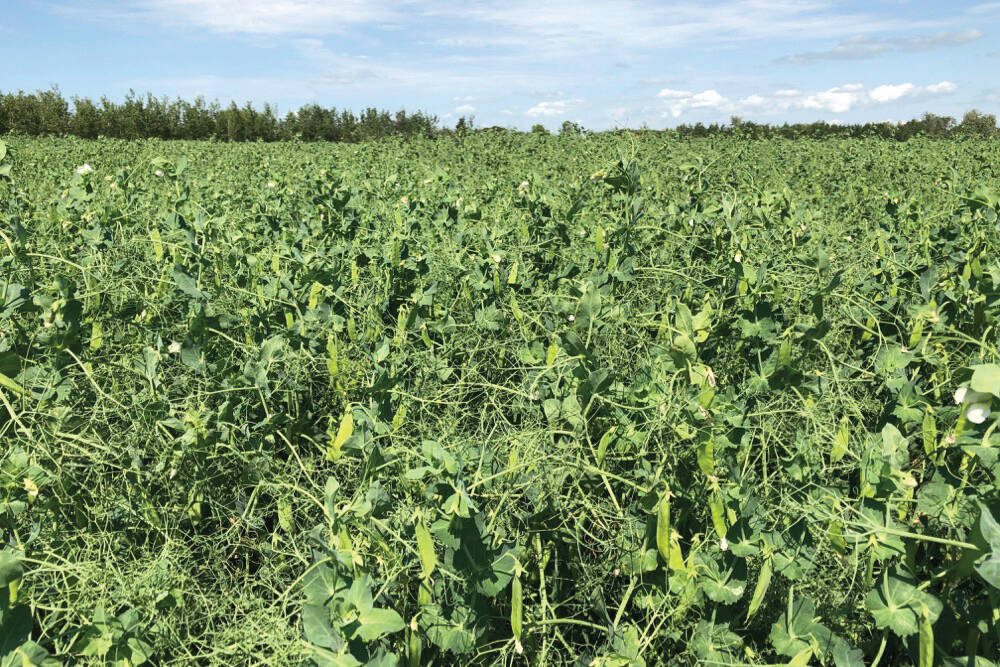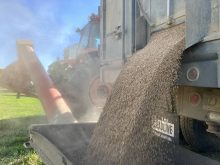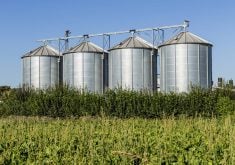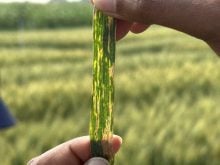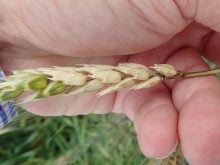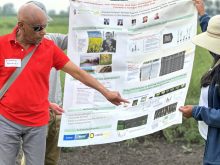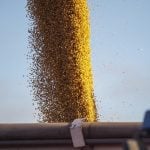Farmers have another weapon in their arsenal to combat aphanomyces root rot.
It’s been two years since UPL’s Rancona Trio was registered for early season suppression of aphanomyces in lentils and peas, but its product Belmont is now registered as a tank mix option for the Rancona Trio. It provides early season control of aphanomyces, as opposed to suppression.
Why it matters: Persistence of aphanomyces in soil and the long rotations needed to control it are challenges for those who want to increase the acreage of more vulnerable pulses like peas in Western Canada.
Read Also

Manitoba boosts stake in cereals centre to $23.5 million
Premier Wab Kinew said the additional project funds will help ‘Trump-proof’ the provincial economy.
“Suppression means a 60 to 80 per cent reduction in disease, and control is above 80 per cent,” said Holly Derksen, technical support specialist with UPL. “So you’re seeing more than 80 per cent reduction in disease in that early season window when you use Rancona Trio and Belmont on the seed.”
“Belmont is straight metalaxyl, so it’s not a new product by any means. It’s been around for a long time,” added Derksen. “You haven’t been able to buy straight metalaxyl, even though it’s been registered for a long time. So the real big thing is that now it’s going to be more commercially available.”
Aphanomyces is a stubborn and difficult-to-control fungal disease that thrives in wet conditions. It affects several pulse crops, but lentils and field peas are most susceptible, while faba beans and soybeans show some resistance.
Rancona Trio was registered in fall 2022 by the Pest Management Regulatory Agency. Until that time, the only product available for early suppression of aphanomyces was NuFarm’s Intego Solo, with the active ingredient ethaboxam.
Intego Solo is also listed as a tank mix on Rancona Trio’s label. Derksen said the addition of Intego can boost protection to the control level.
“Right now, those are the two options that are available for seed treatment activity, which is the only way that we have any sort of chemical chance of managing the disease.”
Farmers might recognize a problem with aphanomyces in a wetter year like this, but it’s likely the problem has always been there.
“For people who weren’t aware that they had aphanomyces or hadn’t seen it for a while, it didn’t go away. It just was not the right conditions for it,” Derksen said.
“They just didn’t notice it in those drier years, but it was there at low levels. Aphanomyces likes it wet, so it has been showing up a lot more this year.”
Symptoms can be confused with water stress in low-lying areas, so Derksen advised digging up plants to determine if disease is the cause, “because it should be managed if it is detected.”
A new product might help farmers with that detection. A company called Pathoscan has developed a test that produces instant, on-farm results for plant pathogens, including aphanomyces, sclerotinia and fusarium head blight. The company featured its new product at the Ag in Motion farm show in Langham, Sask., in July.
“All you have to do is take a part of your plant and process it using a very simple step,” said company co-founder Ethan Done.
“It takes about five minutes, and then you can just throw it into our machine and, in about an hour, if your plant is positive for the disease you’re looking for, the tube will turn colour, and then you can use that data to make agronomic decisions.”
If the disease is detected, a seven- or eight-year break in rotation might be required before peas and lentils are seeded again.


